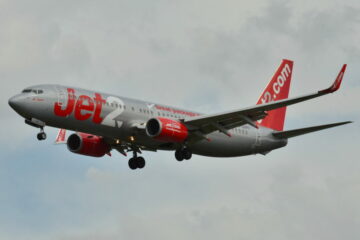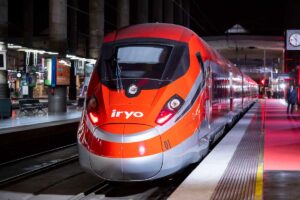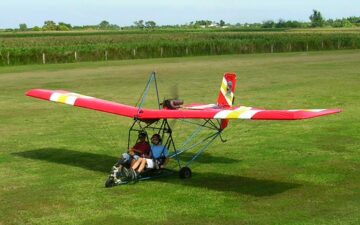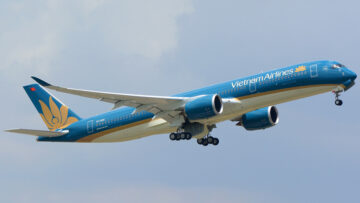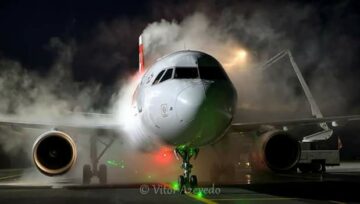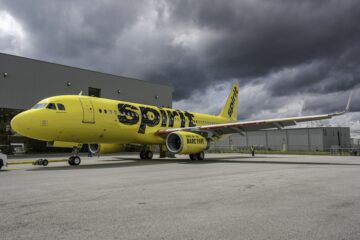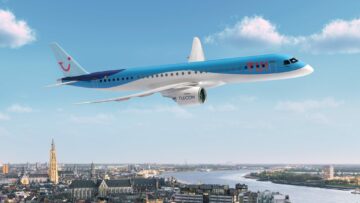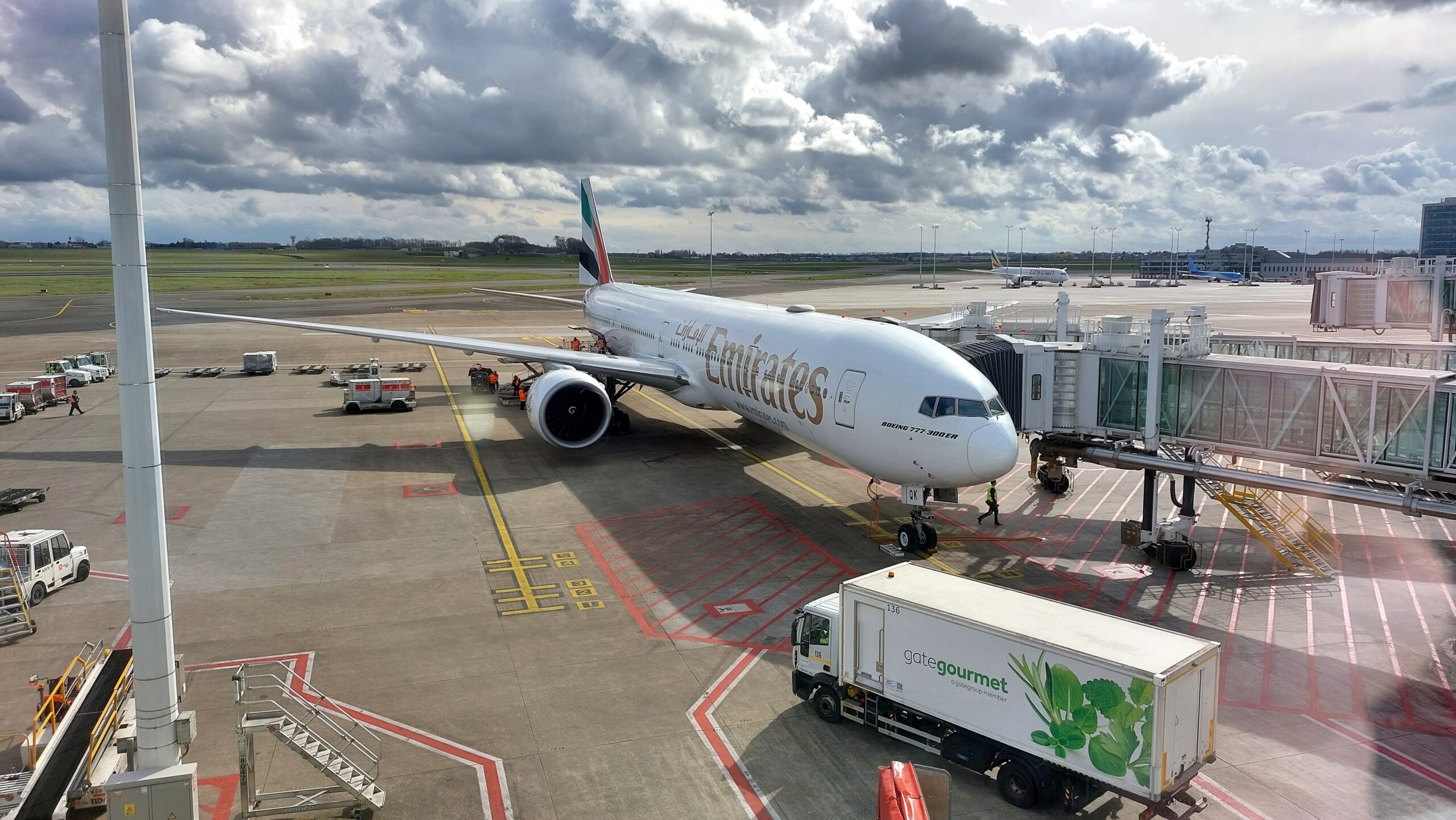
Since the dawn of man-powered flight, the size of aircraft has been increasing to capacities never dreamed of by early designers and engineers. The Airbus A380-800 is currently the world’s largest passenger aircraft – Artemis Aerospace explores this behemoth of the skies and why production ended.
The Airbus A380, designed and produced by Airbus, the European multinational aerospace corporation, is not only the current largest passenger aeroplane in the world, but also the only jet airliner with full length double decks. It has an impressive maximum capacity of 853 passengers, if configured entirely for economy seats, and originally hit the drawing board as a rival to the immensely popular Boeing 747, the original ‘jumbo jet’, which can ‘only’ carry a maximum of 660 in the same configuration.
It first took to the skies in 2007 under the aegis of Singapore Airlines and was widely seen to be the future of the aviation industry. However, after a total of 254 aircraft were built, in 2019 Airbus announced that production of the Airbus 380 would cease in 2021, a surprisingly short time span considering the Boeing 747 first flew in 1969 and ceased production in 2022. What happened in these fourteen years? And does it demonstrate that bigger really is better?
The Airbus 380 project was launched in 2000 when hub-to-hub flights were becoming popular and there was a significant congestion issue at major hub airports. In addition, extra slots at popular airport hubs such as London Heathrow were not only astronomically expensive, but also rarely became available. As a result, airlines were unable to boost the number of flights into an airport to increase market share. The only way to augment the number of passengers would be to concentrate on the capacity of the aircraft, and there was nothing larger at the time than the Boeing 747 and 777.
The Airbus 380 has an overall length of 72.7 metres, a height of 24.1 metres and a wingspan of 79.8 metres. Although, as mentioned above, it can carry a maximum of 853 passengers (in which configuration it has the lowest fuel burn per seat of any aircraft), it largely carries 545 passengers who are spread between first, business, premium economy and economy class.
In 2000, the projected development cost was €9.5 billion, but complications during development, such as issues with the 330 miles of electric cabling, continually pushed the total up and by 2014 it was estimated to have cost €18.9 billion. In addition, parts for the Airbus came from all over Europe; the nose and centre sections were built in Northwest France, the wings in Wales, the horizontal tailplane in Cadiz in Spain and the rear fuselage and vertical tail fin in Hamburg. The size of these finished parts requires complicated and expensive logistics to transport them to the Airbus factory in Toulouse, and there were also considerable delays in the schedule. The first Airbus was eventually delivered to Singapore Airlines (with the registration of F-WWOW!) with Emirates, Air France, Qantas, Korean Air and Malaysia Airlines also introducing the Airbus to their service.
However, although passengers loved the comfort and space of the A380, a number of issues gradually became apparent. With fuel prices rising, the Airbus could only achieve its fuel efficiency with all seats filled – expecting that number of passengers wanting to use the routes on a daily basis was unrealistic. As a result, airlines were not recouping their costs.
A total of 251 Airbuses were ordered during its production lifetime, and of these, 123 went to Emirates. From a marketing point of view, there was a perception that the Airbus was the ‘Emirates’ aeroplane which inevitably meant that selling it to other airlines was more challenging.
In addition, by the time the Airbus took to the skies, the aviation industry was moving away from the hub-to-hub flying model. Long-haul flights were rising in popularity, but people were increasingly preferring to fly directly rather than waste time changing over at a hub. Newer aircraft were being designed with this in mind that incorporated fewer seats and more efficiency.
Due to the size of the A380, there were also issues with routes. It was only worth scheduling an Airbus if there was a significant demand for the route and an airline could be expected to fill the aircraft.
Another major difficulty was the number of airports which would have the capacity to accommodate the Airbus. It’s around 30% larger than the Boeing 747, heavier than other aircraft and has a wingspan approaching the length of a football pitch. The Emirates hub at Dubai was able to receive the Airbus, but many other airports, particularly smaller or older ones, needed extensive and costly remedial works to land and manoeuvre the Airbus safely.
This included strengthening taxiways and runways and widening them to fit the wingspan, as well as possibly moving signage and lighting. More allocated space at gateways would be required, and the purchase of double-decker air bridges. The larger number of passengers would require extra ground support such as more customs provision and security and check-in areas and larger baggage carousels.
A further complication is the jet blast contour – the effect created by the thrust force from the back of the engine. Due to its size, the contour of the Airbus is larger than other aircraft so more space behind is needed for a safe take-off.
Finally, since the inception of the Airbus, fuel prices have risen considerably, and the more fuel-efficient and sustainable twin-engine aircraft are increasing in popularity over the traditional four-engine versions. Due to their increase in reliability, they can now travel for longer distances, and the reduction in fuel use per flight is an added bonus for airlines keen to show their green credentials. Maintenance costs are also lower, as a significant proportion of both routine and unexpected maintenance is centred on the engines.
We will continue to see the impressive bulk of the Airbus 380 crossing the skies for many years to come despite production ending. Although its size is undoubtedly its unique selling point, the difficulties the A380 has encountered in its lifetime demonstrate that bigger is not necessarily better.
(with special authorisation of Artemis Aerospace)
Related articles
- SEO Powered Content & PR Distribution. Get Amplified Today.
- PlatoData.Network Vertical Generative Ai. Empower Yourself. Access Here.
- PlatoAiStream. Web3 Intelligence. Knowledge Amplified. Access Here.
- PlatoESG. Carbon, CleanTech, Energy, Environment, Solar, Waste Management. Access Here.
- PlatoHealth. Biotech and Clinical Trials Intelligence. Access Here.
- Source: https://www.aviation24.be/manufacturers/airbus/a380/is-bigger-really-better-a-history-of-the-airbus-a380/
- :has
- :is
- :not
- $UP
- 1
- 2000
- 2007
- 2014
- 2019
- 2021
- 2022
- 24
- 254
- 5
- 7
- 72
- 8
- 9
- a
- A380
- Able
- above
- accommodate
- Achieve
- added
- addition
- Aerospace
- After
- AIR
- Airbus
- aircraft
- airline
- airliner
- Airlines
- airport
- Airports
- All
- allocated
- also
- Although
- an
- and
- announced
- any
- apparent
- approaching
- ARE
- areas
- around
- Artemis
- articles
- AS
- At
- augment
- authorisation
- available
- aviation
- Aviation24
- away
- back
- basis
- BE
- became
- becoming
- been
- behemoth
- behind
- being
- Better
- between
- bigger
- Billion
- board
- boarding
- Boeing
- Bonus
- boost
- both
- BRIDGE
- bridges
- Brussels
- built
- bulk
- burn
- business
- but
- by
- came
- CAN
- capacities
- Capacity
- carry
- cease
- centre
- challenging
- changing
- class
- come
- comfort
- complicated
- complications
- concentrate
- Configuration
- configured
- congestion
- connected
- considerable
- considerably
- considering
- continually
- continue
- CORPORATION
- Cost
- costly
- Costs
- could
- created
- Credentials
- crossing
- Current
- Currently
- customs
- daily
- decks
- delays
- delivered
- Demand
- demonstrate
- designed
- designers
- Despite
- Development
- difficulties
- Difficulty
- directly
- does
- double
- drawing
- Dubai
- due
- during
- Early
- economy
- effect
- efficiency
- Electric
- emirates
- ended
- ending
- Engine
- Engineers
- Engines
- entirely
- estimated
- Europe
- European
- eventually
- expected
- expecting
- expensive
- explores
- extensive
- extra
- factory
- fewer
- fill
- filled
- fin
- finished
- First
- fit
- flight
- Flights
- flying
- Football
- For
- Force
- France
- from
- Fuel
- fuel efficiency
- full
- further
- future
- gate
- gateways
- gradually
- Green
- Ground
- hamburg
- happened
- Have
- height
- High
- history
- Hit
- Horizontal
- However
- HTTPS
- Hub
- hubs
- if
- immensely
- impressive
- in
- inception
- included
- Incorporated
- Increase
- increasing
- increasingly
- industry
- inevitably
- into
- introducing
- issue
- issues
- IT
- ITS
- jpg
- Keen
- Korean
- Land
- largely
- larger
- largest
- launched
- Length
- lifetime
- Lighting
- logistics
- London
- longer
- loved
- lower
- lowest
- maintenance
- major
- Malaysia
- many
- Market
- market share
- Marketing
- max-width
- maximum
- meant
- mentioned
- mind
- model
- more
- moving
- multinational
- necessarily
- needed
- never
- newer
- nose
- nothing
- now
- number
- of
- older
- on
- ones
- only
- or
- original
- originally
- Other
- over
- overall
- particularly
- parts
- People
- per
- perception
- Pitch
- plane
- plato
- Plato Data Intelligence
- PlatoData
- Point
- Point of View
- Popular
- popularity
- possibly
- Premium
- Prices
- Produced
- Production
- project
- projected
- proportion
- provision
- purchase
- pushed
- rarely
- rather
- really
- receive
- reduction
- Registration
- reliability
- remedial
- require
- required
- requires
- result
- Risen
- rising
- Rival
- Route
- routes
- routine
- safe
- safely
- same
- schedule
- scheduling
- sections
- security
- see
- seen
- Selling
- selling point
- service
- Share
- Short
- show
- significant
- since
- Singapore
- Size
- skies
- slots
- smaller
- So
- Space
- Spain
- span
- special
- spread
- strengthening
- such
- support
- surprisingly
- sustainable
- than
- that
- The
- The Future
- the world
- their
- Them
- There.
- These
- they
- Third
- this
- thrust
- time
- to
- took
- Total
- traditional
- transport
- travel
- two
- unable
- under
- undoubtedly
- Unexpected
- unique
- use
- used
- versions
- vertical
- View
- wanting
- was
- Waste
- Way..
- WELL
- went
- were
- What
- when
- which
- WHO
- why
- widely
- will
- wings
- with
- works
- world
- world’s
- worth
- would
- years
- zephyrnet

